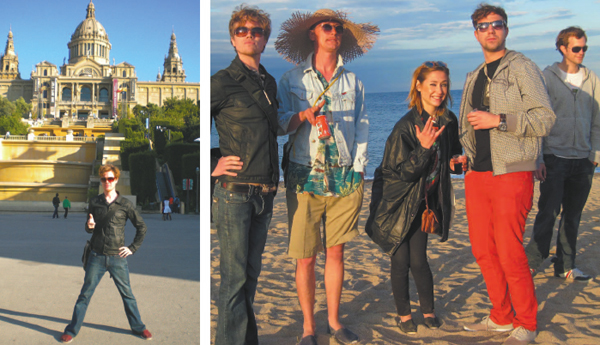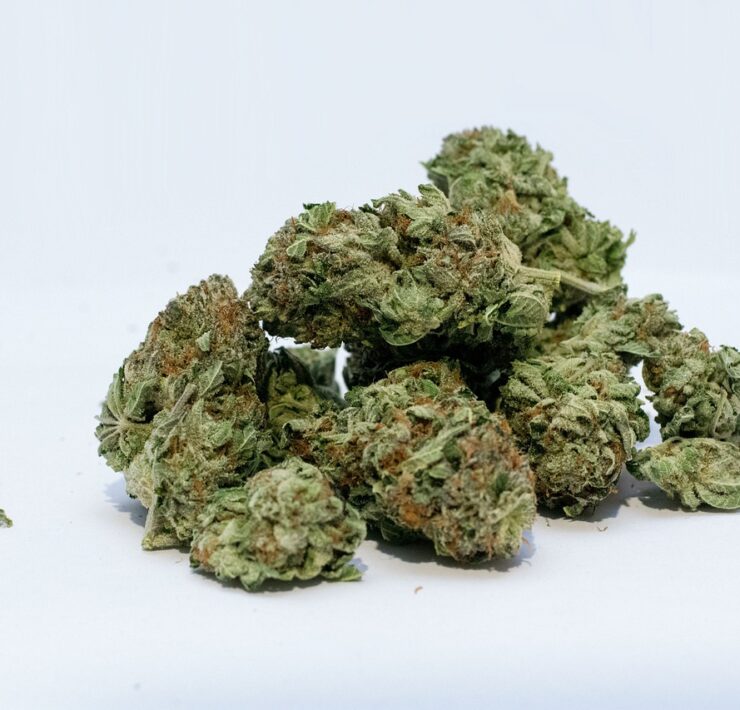Travel: Dionysian discoveries in Sitges, Spain


When I arrived in Barcelona, I instantly decided to take up smoking and grow a beard. Not out of any pretentious need to blend in, but because it seems like declarative, vacation-y thing to do: A symbol of leisure. I’d only be in Spain for nine days and needed all the declarations I could get.
I’ve never been much of a smoker, and my stuttered pubescence has always kept me from achieving proper facial hair, but it quickly occurred to me that Spain is the place to put all neurotic hang-ups on the shelf. Order that slice of cake for breakfast, and while you’re at it have a glass – or a bottle – of wine, and follow it up with a nap until 9 p.m.
After a few days of this, you lose all sense of what you must look like to other people. On the street there is no sense of personal space or complex etiquette. What seems like a sidewalk doubles as a road for scooters and vans that assume you’ll hear their engines and step aside. Things that would be considered rude in the states are oblivious necessities in Spain.
With stubbly face and dizzy, nicotine-filled head, I checked in with my Polish hosts in downtown Barcelona. I found this Polish couple on the website AirBnB.com, an international social network of travelers and hosts. Cheaper than a hotel, but pricier than the free-of-charge couchsurfing.com, my hosts offered eight nights in a charming bedroom, with nearby kitchen, endless wine, marijuana and tips on navigating the city and not getting pick pocketed (avoid the doors on the metro): All for the reasonable price of 410 Euros.
Why Polish hosts?
It turned out there were a number of Polish immigrants in Spain. Apparently Poland has fared stunningly well during the European economic crisis, yet shitty weather and an uninspiring culture drove my young hosts south to Spain – despite the country’s 25 percent unemployment rate. Not having much experience with Poles, I was attracted to the sundeck and pink-haired mannequin advertised on their profile. We spent our days drinking vodka and hanging out on the beach, and our nights drinking more vodka and eating giant, olive oil soaked meals.
The Poles love their vodka.
“In Europe, you’re not an alcoholic unless you’re living half-naked on the street, drinking anti-freeze from a cast-off shoe,” author David Sedaris once wrote.
I quickly learned that attitudes toward drinking were different in Spain than in the in the U.S. Perhaps it was the single cans of beer for sale in the airport gift-shop that first did it, or the profoundly low prices of drinks available on every corner of the city.
A meal is not a meal in the Mediterranean without a bottle of wine, and that demand has driven prices way down. Even with the Euro being worth about $1.25, most of the wine I drank cost about half as much as it would in the States. Out of work, middle-aged men yell “Cervezas!” about every half block, hustling six-packs at twice the price. On the beach, one particularly sad character sold me hash and a bottle of rioja out of a Hannah Montana backpack (my assumption was that he left the house in a hurry and it was the closest thing at hand).
My Polish hosts lived right in the city center in the Las Ramblas neighborhood, where stoned skaters will grab your wallet and street vendors will sell you fish fresh out of the Mediterranean. It was equally visceral and exotic, though after a few days I grew tired of the manic pace and abandoned the city, catching a train to the Gayest City in the World.
OK, maybe Gayest City in the World goes too far, but Sitges, Spain has got to be in the top five. During Francisco Franco’s 1936-75 dictatorship of Spain, many gays and lesbians were imprisoned, tortured and executed, leading the more bohemian, ’60s counter-culture beach-town of Sitges (pronounced SIT-JEEZE) to become an isolated refuge of open, same-sex love.
The city has since become an international icon of gayness, with year-round parties, a film festival, decadent carnival and one of most notorious gay pride events in the world. Upon entering the city I found a pamphlet titled Sitges Gay Map 2012 boasting that “1 in 3 people are gay here” – even the mayor.
When I arrived it was cold and grey, with most shops closed and only a few smattering of people walking down the street. Looking for some sign of life, I headed to the beach, where impressively tan and sculpted Spanish men languished in immodest Speedos. It couldn’t have been more than 55 degrees (I was in flannel shirt and sweater) but everyone on the beach was practically nude. Yet the vibe was somber and quiet, with only handful of people hanging out, most taking naps or getting massages. A condom drifted in with the tide and I got the feeling that I’d missed the party; that Sitges in May doesn’t live up to the town’s legend of Dionysian debauchery. To me, it looked more like an abandoned amusement park.
Foolishly, I had forgotten to look at my watch.
Sitges was taking its Siesta. 
From an American perspective, the idea of eating large quantities of food and wine, and then napping in the middle of a workday evokes one single, derisive word: Lazy. But for generations scientists have been praising the Mediterranean diet and embracement of naps as the key to a long, healthy life – the average lifespan in Spain is 80.9; while in the U.S. it’s 78.2. Every day in Spain I would be caught off guard by shops closing their doors and streets emptying for around two hours (typically from noon to 2 p.m., but never on a set schedule); then popping to life again for the second half of the day, which extends much later than our 5 p.m. Many in Spain don’t eat dinner until after 10 p.m.
Later that afternoon, Sitges returned to life with the sound of drumming.
I was on the beach, smoking a cigarette and admiring an impressively sculpted set of abs, when I heard the percussive sound drifting down from the city. When I returned, downtown Sitges was not how I had left it. Shops were brightly lit with open doors, baking smells drifted from cafes and the streets were packed with bodies. One strip in particular, Picado Street (or Sin Street) was having their annual Seven Deadly Sins celebration. Some kind of teenage drum troupe was marching up and down the street, pounding out wild, complex rhythms, while every restaurant on the strip handed out free cocktails and tapas.
“Welcome to Thit-jeeze!” one restaurateur said with a thick lisp, handing me a blue cocktail and kissing me on the cheek. He looked like a young Kim Jong Ill and when he kissed me I felt a thick stubble on his cheek and became jealous – after three days my beard resembled more of a balding kiwi than Burt Reynolds’s chest. The crowd was thick with dancing, drinks and food. The teenagers drank wine and kept the party alive for hours. It all seemed very novel, but I got the feeling that for those few who lived in Sitges (less than 27,000 of them), it was just another Wednesday afternoon.
Back in Barcelona I visited the Museu Nacional D’art Catalunya, a giant museum of 14-16th century Catalan art. The MNAC sits on an epic hill overlooking Barcelona, with giant stone staircases where you can sit and listen to live Spanish guitar players and watch the sunset. And like anywhere else in the city, vendors selling wine, beer and sandwiches are within spitting distance.
Inside, creepy pictures of the baby Jesus nursing from mother Mary lined the walls. Despite the age difference, Jesus somehow looked older than Mary – a spooky man-child with a world-weary indifference to his situation. When he wasn’t nursing, Baby Jesus was blessing those who had traveled miles to bring him gifts and praise, always looking vaguely bored and depressed. I kept imagining a cigarette between those two pudgy fingers he was always holding up, flicking ash in people’s faces like a spoiled child star. I guess the distant, vaguely grumpy expression Jesus held was supposed to make him look noble or something, but to me he always had an expression that said “this sucks; where’s my gin?”
It wasn’t only the infant Son of God that looked sleepy and unimpressed. All the knights, saints and kings maintained that same supermodel bored/pissed look. They could be slaying dragons, being put on the rack or ascending to the afterlife, and still they just seemed to want to change the channel.
Though the most intriguing thing to me was how pale, skinny and weak all the men got away with being back then. Not only got away with, but pursued. Growing up in the rural Midwest, the image of the tan, thick-necked cowboy was the ideal; my body – looking like a chicken skeleton dipped in Elmer’s Glue – was an endless curse. But if I had lived in 15th century Europe I would have been the cat’s pajamas. I’d have ruled the land as a playboy, instead of being something to shield your eyes from in the daylight. 
I suppose many women have a similar feeling when they see that the ideal female figure a few centuries ago was thick hips, big ass, paunchy stomach and small breasts.
I reveled in the celebration Europeans have for the dandy body type in a way I couldn’t have back on the other side of the Atlantic: I went shopping. A lover of thrift stores, I’ve always been disappointed with the lack of options for thin-waisted men – every second-hand pair of pants was always previously owned by a now-dead retiree with a giant gut and short legs. But in every store I went to in Spain my size was available – the rack of pants always beginning at 26 inch waist, a size unheard of in America since the Hoover administration. Earlier that week in the airport, I watched a CNN report that said by 2030 40 percent of Americans would qualify as obese. I honestly didn’t see that many fat people in Barcelona, except for tourists.
After having spent all my money on slim-fitting pants and tight jackets with small shoulders, it was time to go home. My hangovers were getting bigger each morning, while my lungs weighed heavy with cigarette smoke and my face itched with stubble. I was out of money, felt like shit and was suffering feverish chills, but damn I had some cool clothes.
What's Your Reaction?
Josiah Hesse writes music, feature interviews and news coverage for Out Front Colorado.










